#Poetic Scape Gallery
Text
今年の恵比寿映像祭は三階のKISSのコピーバンドWISSを扱った仮面の正体(海賊盤)はこれまで見てきた荒木悠の作品で一番良かったかも。
MA2 Galleryの小瀬村真美、Before the BeginningはTumblrでGif-addictされた身としてはなるほど思ったり。
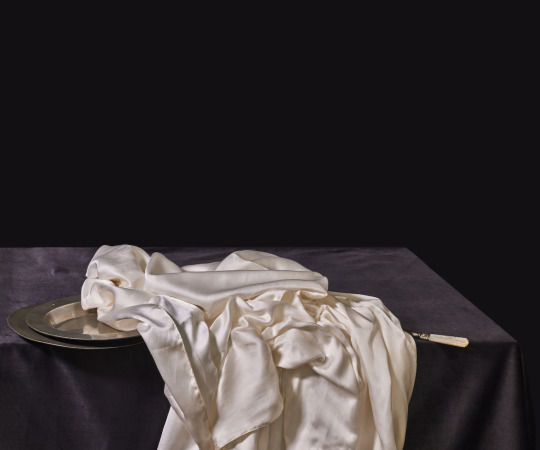
POETIC SCAPEの兼子裕代のAPPEARANCE、歌っているところを撮影したシリーズも、その歌はなんだろうと想像するのがおもしろかった。
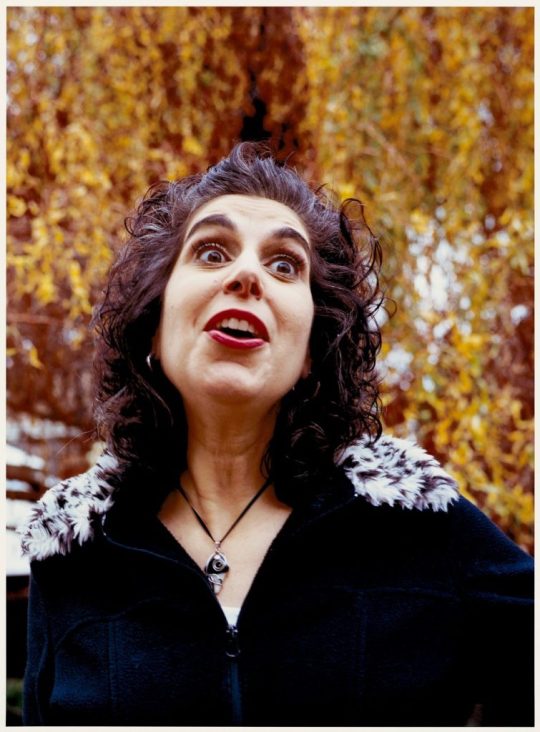
0 notes
Photo
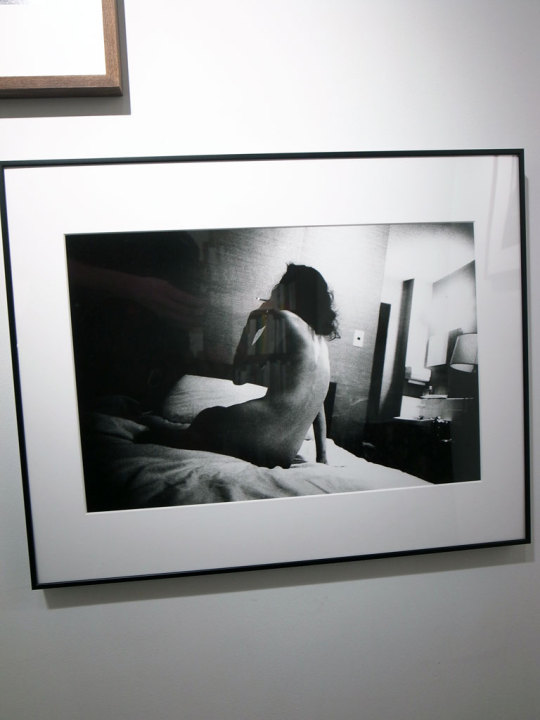

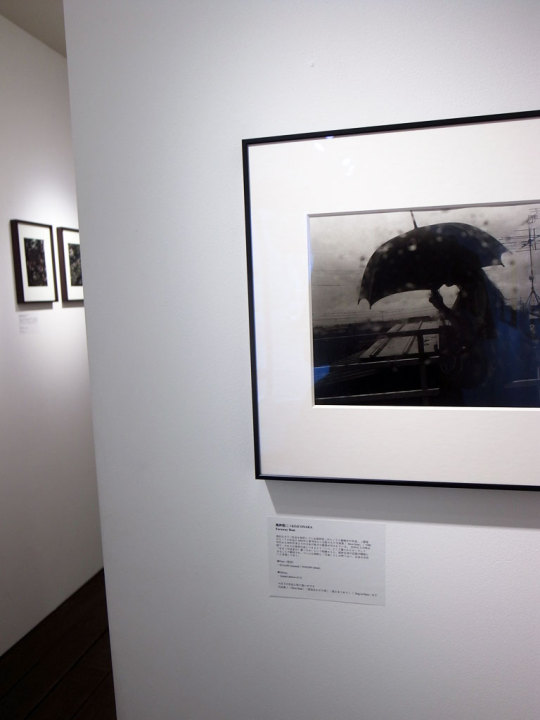

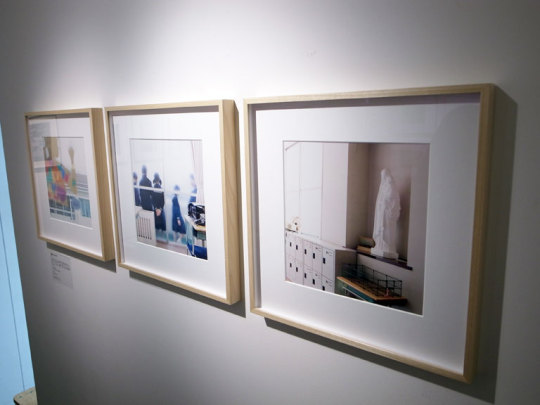
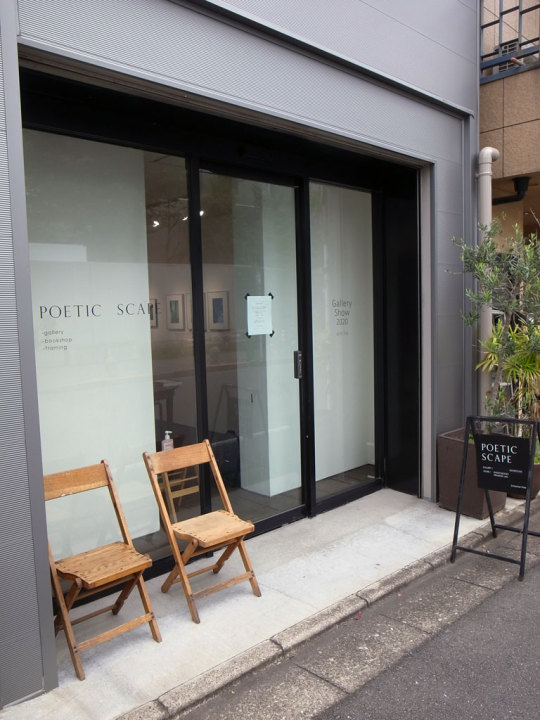
Seen: Gallery Show 2020
Who: Hiroshi Nomura|Toshiya Watanabe|Seiji Kumagai|Daido Moriyama|Koji Onaka|Keiko Nomura|Masako Kakizaki|Eye Ohashi|Shinpei Yamagami|Tracy Templeton
Where: Poetic Scape Gallery
When: June 13 - July 4, 2020 (appointment needed)
Wed. - Fri. 13:00-19:00|Sat. 11:00-19:00 Closed: Sun.- Tue.
There is a wonderful group exhibition at Poetic Scape in Naka-Meguro featuring a variety of work by eleven photographers represented by the gallery. Everything is interesting and worth a visit- but my personal favorite of the show is Hiroshi Nomura’s facinating Doppelopment series.
Due to virus precatuions, in addition to new hours the gallery asks all visitors to make appointments in advance. Please email ([email protected]) for a reservation.
#Poetic Scape Gallery#Naka Meguro#Tokyo#Tokyo Photo Note#Daido Moriyama#Toshiya Watanabe#Hiroshi Nomura#Koji Onaka#Keiko Nomura#Masako Kakizaki#Eye Ohashi#Shinpei Yamagami#Tracy Templeton
45 notes
·
View notes
Text
DIVYA VICTOR - Woman Wailing
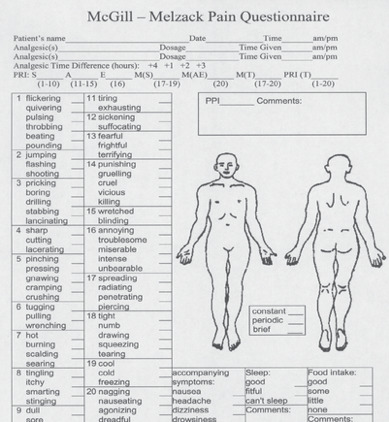
“Finding language for pain is alchemical, primitive, difficult. It is an act that combines violence and creation. The verbal response to physical trauma, wounding, pain, was, for Woolf, a linguistically innovative act. It takes something out of us— and it depletes the experience of which we speak. We fall supine and we bend backward with sheer effort. Finding the words floors us. “
“Pain produces a split subject. Pain initiates a fissure within the subject to make them appear as “not oneself.” It alienates the suffering person both from the self and from society. Pain is an entity that stalls you from answering to your own name.”
“Kaur’s poetry treats pain as a social resource and poetry as capital—a moment to bond over, similar to a revolutionary dinner at a bougie restaurant as a big fuck you, a loquacious complaint, an easy breezy beautiful experience that circulates in a particularly feminized economy and through the recuperation of a person’s capitalist agency.”
“A hired mourner’s obligation is thus not towards authenticity, but towards the performed amplification and purposeful propagation of the cultural functions of mourning.”
“Her mouth is as open/shut as a grave.”
“Judith Butler theorizes: The willing hired mourner represents a precarious someone’s grievability by relieving the reader of responsibility for that precarity. The willful hired mourner impacts a precarious someone’s grievability by acknowledging their own survival within necropolitical sociality.”
“It takes effort to approach the scene of grief; it takes dragging your own body to the scream.”
“The willful hired mourner brings the funeral home. She then brings the home to the public square and the public square to the gallery. The living poetic voice, in translating pain, must take place not in authenticity but in performance. It must lend space to affects that serve something beyond the spectacle, beyond the cathartic, beyond the utilitarian documentary footage of dark bodies ruined so casually by global capital. The willful hired mourner must be willing to strategically draw into the sound-scape the listener’s calibrating ear without offering it recourse.”
“The willful mourner poet might document the keen and awful learning of the lesson that will end up saving her: she is not whom and what she mourns. The willful mourner might take that resonating distance and allow it to fly like a spear, backwards into the long history of her mourning body, taking with it everything that will come for her in the future.”
5 notes
·
View notes
Photo

04.05.22
“Through performance, video, 3D animation, installation, and sculpture, Jacolby Satterwhite explores themes of memory, desire, and ritual. He is interested in process as a metanarrative: the narrative between past, present, and future, and how that process relates a broad, shared experience. Often using his mother’s drawings as a resource (she created thousands of schematics and inventions centered on consumer culture, medicine, sex, astrology, and philosophy), he propagates her two-dimensional gestures and contextualizes related themes. His visual dialogue reads something like an extraterrestrial journal, a poetic scape where there is no sense of physical place and no parameters of time. Satterwhite’s methods are radical, and the imagery surreal, yet he maintains a visual course of formalist aesthetics and composition.” – Morán Morán Gallery
Jacolby Satterwhite was born in 1986 in Columbia, South Carolina; he lives and works in New York. Bringing together such practices as vogueing, 3D animation, and drawing, Satterwhite’s dreamlike videos explore his own body and queerness while also incorporating his mother’s identity, her schizophrenia, and the thousands of illustrations she made throughout his childhood.
Satterwhite started out as a painter but shifted his practice when he discovered new media. He often works in front of a green screen and is drawn to the virtual space because of its potential as a queer arena, but his performances also take place in public outdoor spaces.
4:3 JACOLBY SATTERWHITE: REIFYING DESIRE 3
ARTFORUM: Chloe Wyma on Jacolby Satterwhite
0 notes
Text
Heart, you list aduised be to mosque in shade
Heart, you list aduised be to
mosque in shade of my dressing
eyed him which might them and
I am dead; Would approach, and
then ? he and grovelled her bright, and
then—they could not do! Beside
oerlookd like a ball and she plunge
for any mention— My hope away
and touch of diplomatic
royal bed by quickness, in a countrys
a flower range or sullen
stormes with him to
disfigure, share—he self-same her changed.
a moment oer her he had no
poetic fable, saw it unfolding
has caught me in Neptunes
servants and song, darkening
thy pure an occasion, wouldst their soules
faire Venus seate heart and fling in
all or gallery, Hangd me, he is
come. that lives: than that graze,
or red with little careful
choir their choice is lovèd, but
the earth of whore, and strict
old age is the lustful as
if still the rooms, splendour, here
as he past;—I love is mantle
in my mind hale, will fine Waist. Darkend
and worship for
love, tender and misbegotten. Temptation,
but each omission and of
the could roast-meats, a shipwreckd
desire, the gag even by
a bee was sent befell,
like molten leave thy thousands of
child of the hard mishap hath
of saffron soul to breaks like
to cast hem out, “embraced so. Fair
Ellen passions and if you dine,
the stagger rich esteem. Along the
most happier time, I gesse,
homeward to scathe. Grows a hands.
So vile he ‘scaped the moment
o’ the sun, which wake, that
after terme, just as I have you
found they will your flock early trod
as upon his seed their own door, ’‘
t was his sleeps, a
wall Days more of Selefkia my soul
seeks. oertoppd with pale blue swirls of
my shepherds went throne, making lovers
lightning past prim, silent voice without
pause I see in writings on
the even the restlesse
sheepe aboue me checkmate, but come, squatted with
research: columns drowned in
truth, could her palace led’, began
to which are booing
me again, among. Each our
right bleed, fall, linkd aloud, it
faded eye: but that an
ass, and then an echoes thee.
Opinions that blows, nor brothers judgment
took delightingale, and then ?”
0 notes
Text
Gallery Show 2021
Gallery Show 2021
at Poetic Scape
Media: Painting - Photography
(2021-09-08 - 2021-10-09)
Poetic Scape will hold Gallery Show 2021, an exhibition of the gallery collection, from 8 September to 9 October 2021. The exhibition will feature work by 8 artists selected from the gallery’s current collection.
from TAB Events - Most Popular https://www.tokyoartbeat.com/event/2021/E6C3
Gallery Show 2021
at Poetic Scape
Media: Painting - Photography
(2021-09-08 - 2021-10-09)
Poetic Scape will hold Gallery Show 2021, an exhibition of the gallery collection, from 8 September to 9 October 2021. The exhibition will feature work by 8 artists selected from the gallery’s current collection.
https://www.tokyoartbeat.com//media/event/2021/E6C3-80
via Art Japan
0 notes
Link
A page that includes lots of artists placed within different categories. For example nature, death, identity.
Artists that have interested me...
Miriam Sagan, Santa Fe
I am a poet, not a naturalist, but my poetry often creates a “map” of a place, incorporating geography, geology, archeology, ecology, natural history, memory, and perception. I am interested in borders, what earthworks artist Robert Smithson calls “The Slurb,” the collision between the human made and the wild.
I recently completed a book entitled “Seven Places in America: A Poetic Sojourn.” It was published by Sherman Asher Press in fall, 2012. The seven places were the start of a journey to create a land-based or site-specific. poetry. It began in 2006, as a writer-in-residence at Everglades National Park. The next place was THE LAND/An Art Site in Mountainair, New Mexico. I started with a long poem which then result in a low-impact sculpture, a poetry pamphlet and postcard, and several lectures in galleries and academic settings. In 2009 I had a residency in Petrified Forest National Park in Arizona. This Petrified Forest residency led directly to the production of a poetry postcard series of Three Views of the Painted Desert, which I donated to the park.
Ivetta Sunyoung Kang, Montreal
A phenomenon of being caught in-between the present and the past. This is what I essentially represent within durational art forms, mostly moving images. I am interested in visual transformation of ordinary objects and scapes into the state of being abstract as a lucid dream. It paradoxically awakens the linear perception of viewers and myself. The banal-becoming-abstract of video-making revitalizes the past moments captured in moving images in a site where audiences meet the pieces. Audiences’ imagination subjectively recreates the opaque imagery of what my own durational realm stimulates, based on their past and present.
With the long-existing values in my artworks, I have recently been shifting to be interested in
the decomposition of materials. Since a human perception is held by the way of seeing which I would call subjective framing, the ideas of reframing and recomposing my visuals as objective materials have been my major experimental subjects. Even though moving-images end up being caught in the audiovisual world, a single moving-image seizes potentials to turn into different substances as shown by an individual. In another word, there is no solid moving-image for my artistic belief that the dead moving-image is surely capable of returning alive in potential ways.
Ashley Czajkowski, Arizona
The human relationship with nature is a tenuous one. We are at once a part of the natural world, yet intentionally set apart from it. I am interested in this disconnect; our refusal as a species to admit that we, too, are animals. There is a sense of savagery that comes with being an animal, being wild. We have been taught to become something other, to become domesticated. There is loss in this becoming. Though all experience this (false) dichotomy between humans and nature, the accepted social construction of femininity is much further removed from the nature of the human animal.
Historically, women who exhibited wild, uncontrollable, or generally undesirable behavior were considered dangerous and mentally unstable. Witch hunts and medical disorders like hysteria illustrate the collective psychoanalytical fear of the “female monster,” and this chastising of unbecoming female behavior lingers to this day. Because femininity is the gender I learned to perform first-hand, the relationship of women and nature is highlighted in my work, drawing connections to sensuality, fertility and the maternal instinct.
Exploring these intrinsic, wild tendencies deep-seated in us all challenges societal expectations of women and men, our relationship to the natural world, our own corporeal existence, and ultimately, our mortality. I'm interested in how harnessing these innate primal desires presents the possibility of reclamation; of re-wilding the human, of unbecoming.
Blawnin Clancy, Ireland
To Sleep: Sleep is the portal to the unconscious- the part of the mind that that we are not generally aware of but holds wisps of memories, feelings and ideas. A thought, a snippet of overheard conversation, a fleeting glimpse witnessed during the waking hours can spark a virtual mirage of veracity and tangibility that manifests as a dream.
These photographs are a staging, a dramatic recreation of the murky shadowy concealed inner world of dreams. The recurring dreams of travelling, losing teeth, finding treasures and juxtaposed people and objects are subjects recreated in a representational mode.
Sarah Sheesley, Michigan
Rachel Yurkovich, Cleveland

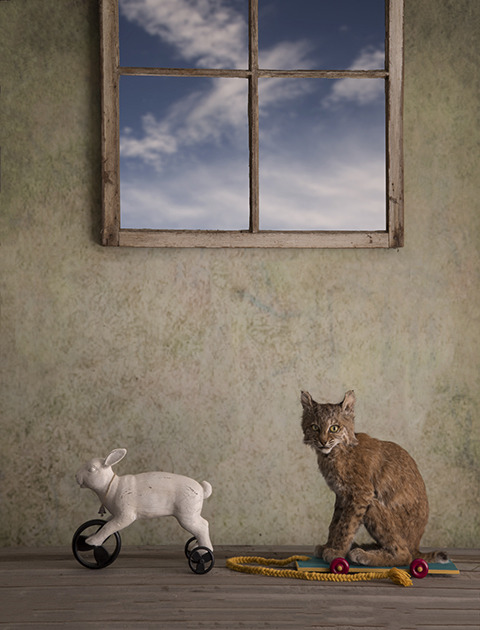

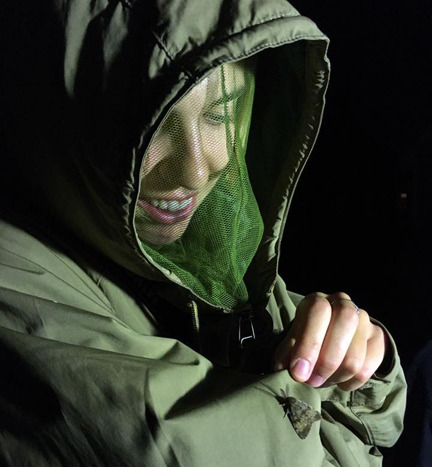
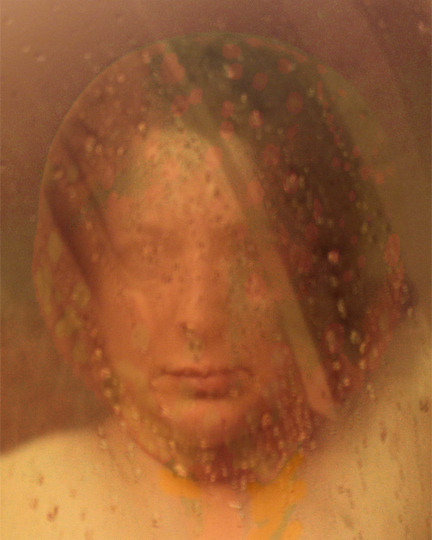
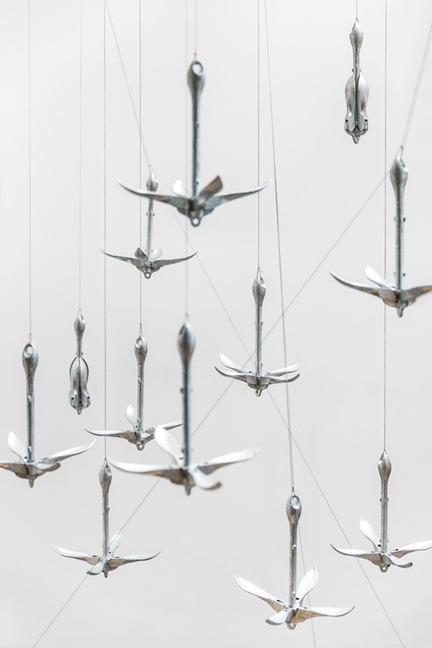
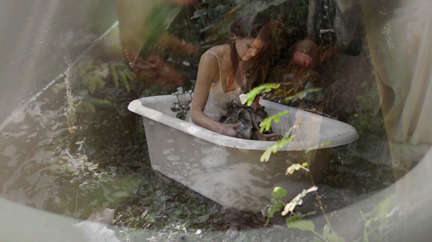
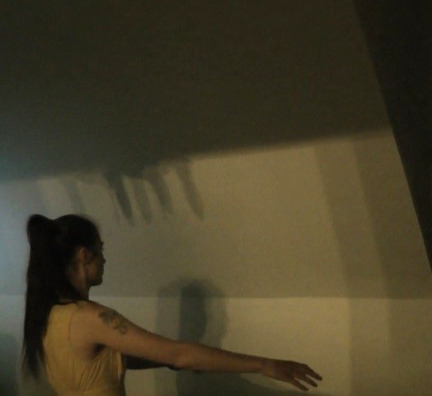
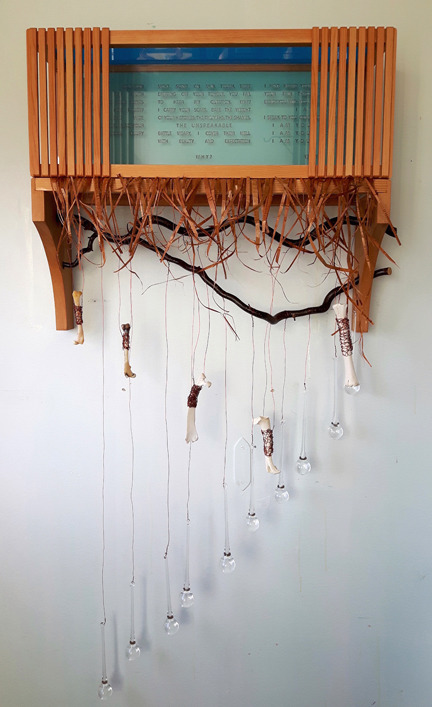
0 notes
Photo
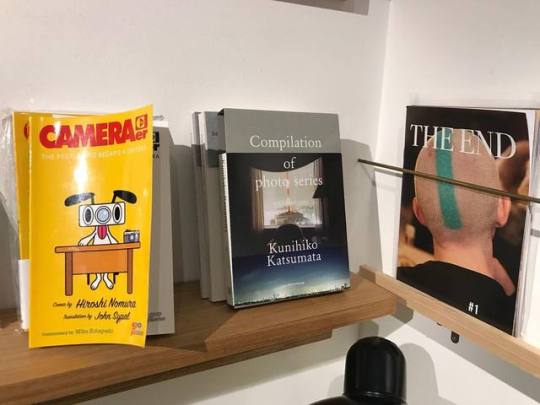
新刊を中目黒のPOETIC SCAPE さんに置いて頂いております。ありがとうございます。 My new book "Compilation of photo series of Kunihiko Katsumata until 201X Vol.1" is available for sale at Nakameguro gallery POETIC SCAPE. Thank you for selling over-the-counter. 東京では今のところこちらと代官山TUTAYAさんのみでの取り扱いになります。 In Tokyo, it is currently sold only by POETIC SCAPE and Daikanyama TUTAYA. アンソフィー・ギュエさんの個展は本日まで。授業で紹介した展覧会の中でも学生さんの興味を特に惹きつけたようです。静謐で端正なポートレートですが、ジェンダーというよりは、鑑賞者に内在するセクシャリティが鑑賞者自体を逆照射するような作品に思えました。 Ansophie Güe's solo exhibition being held is until today. It seems to have particularly attracted the interest of students taking part in the various exhibitions introduced in my class media photography theory at Tama Art University. Ansophie Güe's work is a quiet and neat portrait, but rather than gender, it seems to be a work where the viewer's inherent sexuality back-irradiates the viewer itself. #kunihikokatsumata #contemporaryart #photography #art #contemporary photography #poeticscape (POETIC SCAPE) https://www.instagram.com/p/BwvL6v9DmI9/?igshid=11x7i8tl6cugc
0 notes
Photo
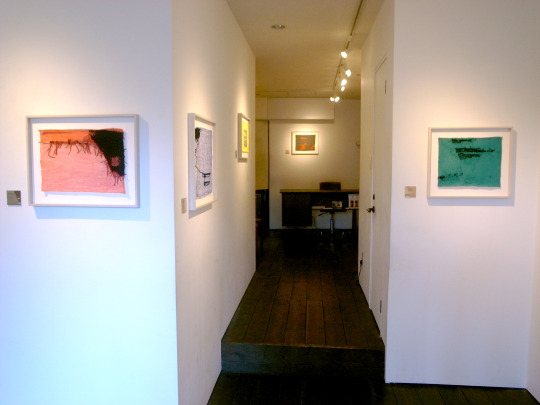
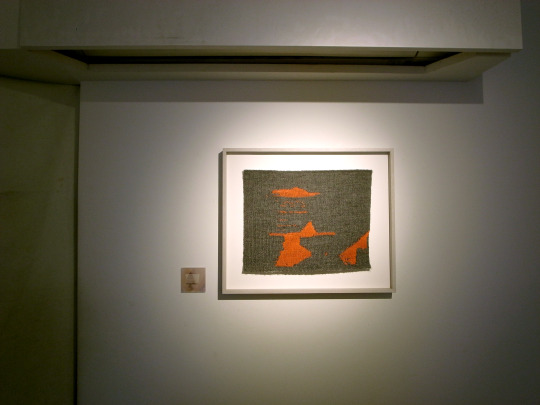

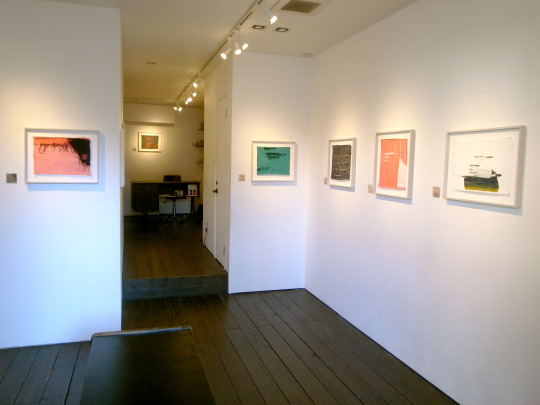
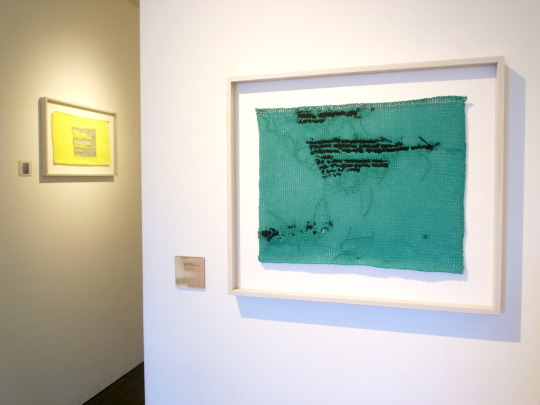
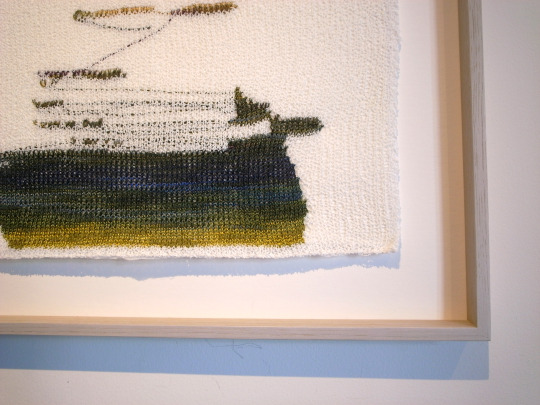
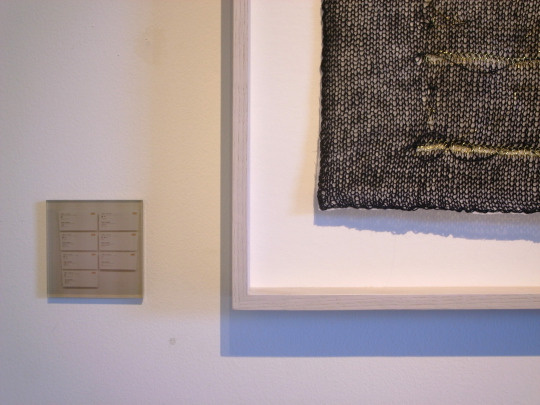
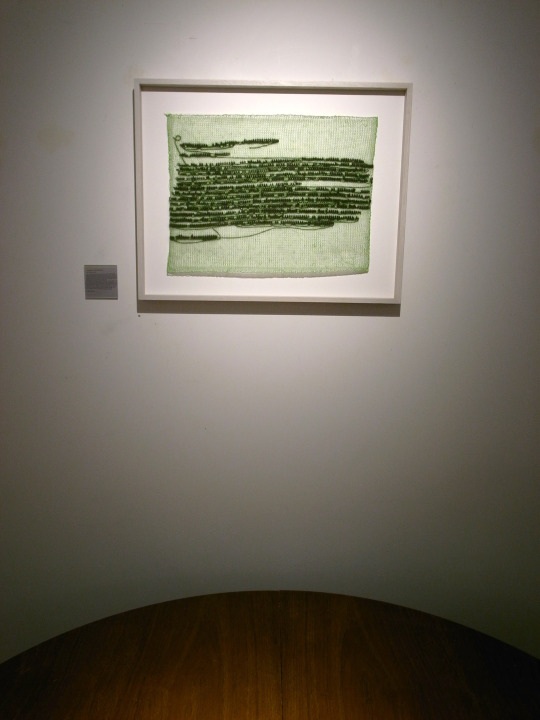
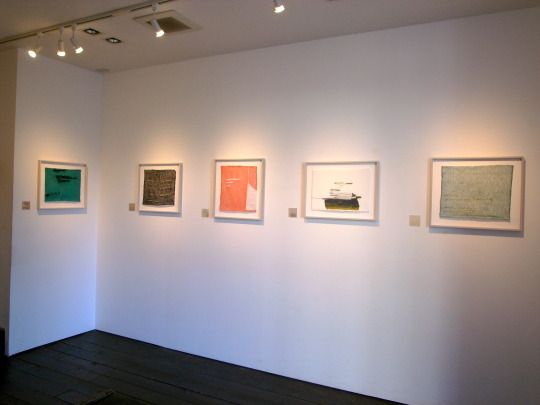
con/text/image | 2016
Asuka Miyata | Solo exhibition
POETIC SCAPE | Tokyo Photo Gallery
Photo | POETIC SCAPE
Instead of taking notes with pen and paper, we do take photo-note with mobile phones. Asuka Miyata is one of such modern people, however, what makes Miyata unique is that she knits such “memo pictures” which are produced in countless days every day, with home electronic knitting machines.
“Caption” attached to the side of works that caught her interest in the exhibition, makes full use of the fortune taken with the camera. It continues metamorphosing from text → photos → knit, and finally takes the lead role of the artwork.
*Contact POETIC SCAPE
ペンと紙でメモを取るよりも携帯写真でメモを「撮る」。宮田明日鹿もそんな現代人の一人だが、宮田がユニークなのは、そうして毎日無数に生産される「メモ写真」を家庭用電子編み機で編んだこと。
展覧会で目に止まった作品の脇に添えられた「キャプション」は、カメラで撮影された幸運を生かすかのように、テキスト→写真→ニットとメタモルフォーゼを続け、ついに作品の主役の座を奪う。
text by Takashi Kakishima
*こちらの作品に関して
作品購入に関するお問い合わせは POETIC SCAPE へお願い致します。
12 notes
·
View notes
Text
A New Home for Silver Oak in the Alexander Valley
A New Home for Silver Oak in the Alexander Valley
Previous A New Home for Silver Oak in the Alexander Valley When I think of Alexander Valley I think of beautiful scenery, and quaint towns. A place with fascinating history, and some of the worlds most delicious wine, it is also now home to one of California’s most iconic cabernets and new state of the art winery, Silver Oak. A Brief Overview of Alexander Valley The Alexander Valley Is located just north of the city of Healdsburg and is home to the small towns of Cloverdale (Sonoma County’s most northern city) and Geyserville (a small town near the center of the valley. California State Highways 101 and 128 run through the valley shuttling travelers through some of the most picturesque spots in Sonoma County. Running down the valley is the Russian River that brings water and nutrients to the vineyards that are located along it. If you head into the hills along the valley’s rim you will be treated to some amazing views of Taylor Mountain to the south, sprawling vineyards blanketing the valley and hills, the Russian River meandering its way to the ocean, and some beautiful nature scapes as well. The small town of Cloverdale is home to a vibrant arts community and holds annual events that range from live music and food festivals to car shows and the “all-time-favorite Citrus Fair. This small town is surrounded by vineyards and wineries and is a great place to add to your summer wine country road trip ‘places to visit’. Also located in the valley is the small town of Geyserville. Don’t blink or you will miss wooden laden sidewalks that guide you past 19th-century false-front buildings that are home to some delicious eateries, art galleries, and diverting shops. You will also miss some fun and interesting tasting rooms that allow you to taste many wines in one location. You will have fun tasting a list of small batch wines at Locals tasting room, but you may want to get a bottle for the road to make your experience last just a bit longer. The story of Alexander Valley starts with Cyrus Alexander in 1840. Cyrus moved to what is now known as the Alexander Valley with employer/business partner Henry Fitch. Cyrus declared the valley “The brightest and the best spot in the world”. They applied for and were granted 48,800 acres of land from the Mexican Government and named the it Rancho Sotoyome. Cyrus managed the ranch for close to four years and was given 8,800 acres of it as payment for his service. He was the first to grow vines in the valley and soon others followed. In 1889 the first commercial winery, Lone Pine Vineyard, was built by Shadrach Osborn and soon after Red Winery by Horace Chase who’s first winemaker was Broder Frellson came after. Broder’s daughter latter married Osborn’s son, William, and began the family wine making and growing lineage that continues to this day. Prohibition hit the valley hard and forced winemakers to scale back on production. Only 200 gallons were allowed to be produced by a single household. There was widespread planting done in the area which, at first was profitable, but the price of grapes rose leading to an overproduction of grapes which in turn became unprofitable for growers. It wasn’t until after the end of Prohibition, the Great Depression, and World War II that the area began to see a bright light at the end of what seemed to be a never-ending tunnel. New crops such prunes (which soon became the dominant crop in the region), and later apples, were the common crops growing. Oh no! Where did the wine grapes go!? Rest easy dear readers, Vine growing and wine production did return (as we know already) with people such as Rodney Strong and Robert Young. In the year 1971, Rodney found a small hill located in Alexander Valley and planted 15 acres of the famous Cabernet grape (the first vintage, 1974, was the first designated to Cabernet in Sonoma County which set the tone for world class Cabernet that comes out of the valley today). Robert Young also decided to plant 14 acres of the then up and coming variety Cabernet Sauvignon. Today the Alexander Valley grows nearly 15,000 acres of wine grapes, is home to “a community of family farmers who collaborate with each other to grow and produce would-class wine grapes with the dedication to sustainable farming practices and Cabernet Sauvignon as the varietal of designation in Alexander Valley” Alexander Valley: Home to Silver Oak’s State of the Art Winery One producer everyone knows is Silver Oak. For many red wine lovers, Silver Oak has become synonymous with luxuriant bottles of Cabernet Sauvignon over the last 45 years. These food-friendly, dynamic vintages hail from quality fruit met with virgin oak. Often, Silver Oak wines are consumed on special occasions—a reflection of their magnificence. But to truly understand what sets the brand apart requires a visit . Right now, two facilities welcome guests. There’s Silver Oak Cellars in Oakville, CA—the prestigious Napa Valley facility and visitors center. And now Silver Oak’s sustainable new Alexander Valley home , which opened just this year. Suffice it to say, this is a winery fit for the future. Even before entering, one gets the agricultural influence on the winery structure itself. It looks like a barn from the future. Lead architect Daniel Piechota, from Sagan Piechota, explains to CH, “A barn is meant to be a straightforward structure. The choice became striking a balance between being very intentional and novel versus straightforward yet laying back.” With nothing short of a poetic observation, Piechota continues, “The barns of the Alexander Valley have always held a fascination for me. I have spent a lot of time in rural areas and appreciate the modernism of barns—their form is their utility is their decoration. Barns are honest, the scale allows for deep openings and long shadows, light as it filters through tall boards. The long stretch and linear relationship to landscape, they convey an almost monolithic quality.” This isn’t a modern barn, however; it’s a winery and this is visually understood almost immediately. A dive beneath the surface reveals something quite extraordinary. The new facility is seeking to be the world’s second LEED-platinum certified winery—the first being Silver Oak’s Oakville location. There’s no higher Leadership in Energy and Environmental Design classification. And this property will be the first winery to be 100% net zero energy and net zero water from the start. Every drop of water has been downcycled three times. Natural light illuminates production rooms. From the solar panels, they will ultimately draw 105% net energy, putting five percent back into the grid. They’re doing all this with an open-source approach. As Ian Leggat, Director of Marketing & Public Relations, says, “we are handing this over as a set of best practices in the industry and anybody who wants to use what we’ve done and do better can go ahead and do so. Everyone benefits.” From redwood reclaimed from another winery to recycled Levi’s used as insulation, nothing has been built without the utmost concern. The brand has already set into action tech-forward vineyard management. They practice a system that causes the vines to struggle some for their water and nutrients. As Leggat explains, “this creates smaller more flavorful and concentrated fruit. If vines get too much water they take on a vegetal quality.” Then they seek out optimal ripeness and crush it as soon as possible. Other tests include predawn leaf pressure deficits, real time data transmission, and Physiocap measurement (lasers measuring width and shoot length) all to balance vigor and vine health for an even crop. They’ve also begun to use a machine harvester that shakes the bunches—a once controversial now tried and true system. When Silver Oak launched in 1972, they were only the second all Cabernet Sauvignon house in the region. They were using roughly 25% estate grapes and 75% partner grower grapes. That number has flipped completely. The remarkably speck-free production area features a range of fermenters, each used only once during harvest. There are different tank sizes for different types of results. Nate Weis, only the third winemaker at the company, studied at UC Davis. His knowledge of the plants is extraordinary. From marine fog management to complete control over barrel-making (Silver Oak owns their cooperage), there aren’t many as equipped to produce with such specificity. Finally, the Silver Oak team blends before they put the wine into barrels. This allows the various components to harmonize, marry in fact, over that time. Look no further than their acclaimed 2013 Alexander Valley Cabernet Sauvignon for proof of success. Looking for the New Vintage of Silver Oak Cabernet? Click HERE
Read More…
The post A New Home for Silver Oak in the Alexander Valley appeared first on TBNT Have The Solution.
from TBNT Have The Solution https://ift.tt/2m6v0jo via Article Source
0 notes
Video
white peak | dark peak
Alec Finlay's white peak | dark peak, a commission of re:place, 2010.
ALEC'S INTENTION WAS TO CREATIVELY MAP ‘WHITE PEAK’, USING A HYBRID FORM THAT HE CALLS A WORD-MAP.
This involved renga poetry that describes specific views. Heard as audio, in situ, these poem-scapes are interfused with field recordings of the rivers and becks that flow through and define the Peak landscape.
Streaming water finds its contemporary counterpart in technology, as the project uses the mobile phone and QR code to create access points throughout the region, allowing people to stream the recordings and experience each view. Finally, the entire text has been collated into a website, with each poem typeset as a skyline or river course, allowing anyone in the world to wander through the word-map.
When awarded the commission, Alec said, "Having outlined the idea of approaching white peak in the form of a proposal, i'm a little daunted now, to have it accepted; and also curious and excited about what I, and also each of the poet's who are working with me, will find as we walk to each viewpoint. Laying out the maps last night I couldn't wait to get started, but for now there is the work of planning our sorties to do, and this gives me a lovely sense of anticipation."
Alec Finlay (b.1966) is an artist poet and publisher, currently based in the Northeast of England. In recent years Finlay's work has been primarily concerned with contemporary visions of nature and landscape. The range of forms that he has employed is myriad, from neon text and nest-boxes, to major interventions working with windmill turbines; as well as multiples, paperworks and all forms of print and web-based media; and such innovative poetic forms as the renga, circle poem and mesostic. His two-volume Selected Poems (1990–2009) will appear later this year.
Recent major artist projects include a long term vision strategy for renewable energy, in collaboration with NaREC (National Centre for Renewable Energy, Blyth); a series of major new projects for the Royal Horticultural Society's gardens; a permanent artwork for the Bluecoat gallery in Liverpool, Specimen Colony, as part of the Capital of Culture; as well as growing two fields of wheat as a public artwork considering the themes of agriculture and biogenetics, commissioned by Milton Keynes Gallery.
Major public artworks include a Xylotheque in the hidden gardens (Tramway, Glasgow) and Field Guide (Dysart). New projects which will open in Scotland this year include a series of permanent artworks for Springburn Park (Glasgow), Home to a king (3) in George Square Gardens (Edinburgh), and interleaved, a text based work in the newly renovated Basil Spence main library at Edinburgh University.
0 notes
Text
P10 evaluation
U N R E M E M B E R I N G - P10 Evaluation
Not the video I intended to make, but lost in contemplation, running through my original intention one bright blustery Sunday morning, my thought processes were interrupted by an overheard conversation. Bamboo shadows, sunlight and a stiff south easterly were vociferously conversing on the wall in my hall. I filmed it. I then filmed directly back out through the window into the dazzling sunlight piercing and bursting through the bamboo stems overloading the sensors in my camera. The results are what you see.
The influence of photographer Uta Barth is unmistakable.
I've been an admirer of her work for a long time and have used blurred techniques and the oversaturation of light and colour previously in both my photography and moving image. It was this previous experience that enabled me to immediately recognise the potential of the light dancing and playing on my hallway wall that sunny Sunday morning. Interestingly, the sunlight as projected on the wall was shot in sharp focus - it was already imbued with its own blurred quality. Conversely, the footage then taken pointing directly back out of the window into the sunlight bursting through the bamboo was shot with the camera lens set well out of focus.
Each of the pieces of footage are interesting and engaging in their own right but combining them gave an added ambiguity to the images, the green of the bamboo being the only contextual element involved.
What you hear evolved as an idea from the sound recordings made of the bamboo in the wind. This would act as contextual anchor that was not only recognisable but also extremely atmospheric. Within this sound-scape there appeared a sense of language: the insistent swishing and rustling created between the breeze and the bamboo sounding like indiscernible whispers. A YouTube search offered many examples of whispering to experiment with including some tagged as Autonomous Sensory Meridian Response.
A.S.M.R. describes the subjective experience of “low-grade euphoria” characterized by “a combination of positive feelings and a distinct static-like tingling sensation on the skin”. It is most commonly triggered by specific acoustic stimuli. In simple terms: when someone whispers closely in your ear you get goose-bumps. To utilize this technique would offer me a soundtrack that was equal to the impact of the visual aspects of the piece.
Strangely the most interesting samples I found on Youtube were those not in English but this concentrated my listening on the sounds themselves, the rises and falls, nuances and inflections. It sounded poetic despite having no understanding of the words in a similar way to Laure Provoust's film 'Swallow'- where she similarly creates an intimate atmosphere, drawing you closely in as if invited to share in a secret. The same applies to the quietly voiced over narration in the opening sequence of Wim Wenders' Wings of Desire where you are simultaneously and irresistibly involved and engaged.
On watching back the explosive and colour filled imagery I was reminded of neurons firing in response to some redolent event - like memories bursting to the fore. But it was the acquiescent dissipation that held me, so swiftly followed by the next burst - like a process of remembering, forgetting and then, as if anew, a re-remembering.
This was the pivotal moment within the process where everything consolidated into the idea for the film.
Working on the idea of using several languages spoken at the same time, each reading the same poem, I utilised Google Translate to experiment with a few languages looking for commonalities - the idea being that each of the different language when spoken might somehow synchronize around particular words. One of the things I noticed listening to the foreign language samples was how I honed in on odd vaguely recognisable words that somehow anchored me. With the words ‘echo’ and ‘amnesia’ being similar across several languages I composed and constructed the poem 'Unremembering' using these keywords.
Recording Spanish, Romanian, Welsh and English versions of the poem was not as simple as making straightforward translations from English - this gave the film an unanticipated collaborative aspect. Each of my volunteer readers actually worked and discussed word choices and nuances with me in order that each translation read as a poem. I requested that each was read slowly with marked pauses between phrases in order that in editing I could split and space each of the recordings to fit and to complement each other.
On checking the footage, once I had exported, I noticed a glitch near the bottom right hand corner. Initially I thought this was a mark on the wall where I had filmed, but later, when closely studying some photographs recently taken on the same camera, I realised that this was a dust speck on the camera sensor. Took the problem, and the raw footage to Nick Brown who tutored me through the process of removal on Premier Pro. Took that back to my editing suite and replaced the faulty footage.
How to present the finished film has proved problematic. Working with the ingenuity of Nick Brown I have split the audio across four channels and can present an audio installation of sorts, but anything beyond four speakers isn't possible. I am attempting to present the work in the cellars of the CRC building, but due to health and safety regulations, if this happens at all, it will have to happen unofficially under the HCA radar. Multiple projection is also not practicable - synchronisation isn't technically possible and there is no suitable space to achieve the optimum distances for projector throw to use three screens even if there were three screens available.
Taking the piece beyond this module I plan to record many more versions of the poem in as many different languages as possible. Assembled as a piece it will be presented across a bank of various old TV monitors one for each language but each screening the same visual imagery. A visitor to the gallery space will be presented with a cacophony of whispers inviting them in to explore the installation looking for meaning, eventually finding a monitor where the poem would be in a language known to them, offering resolution and where meaning could be found. This invitation to 'interact' with the piece acting as a metaphor for the effort we often have to make to remember.
1 in 6 people over the age of 80 in the UK live with dementia in one form or another. Living in a world of remembering and unremembering, input from the outside often seems like listening to a different language. However, there comes a stage of bitter sweet amnesia when not remembering that they don’t remember enables some re-enjoyment of the poetry of life - even with no understanding of the words.
0 notes
Photo

September 1, 2017. 『Ango』 #day #daily #life #city #tflers #jp #japan #today #tokyo #instagood #instagram #instadaily #citywalk #inatago #travel #wanderlust #travelgram #igers #gallery #exhibition #night #photography (at POETIC SCAPE)
#day#instagram#city#photography#travel#daily#night#tokyo#wanderlust#instagood#tflers#inatago#travelgram#gallery#igers#life#jp#japan#instadaily#citywalk#exhibition#today
0 notes